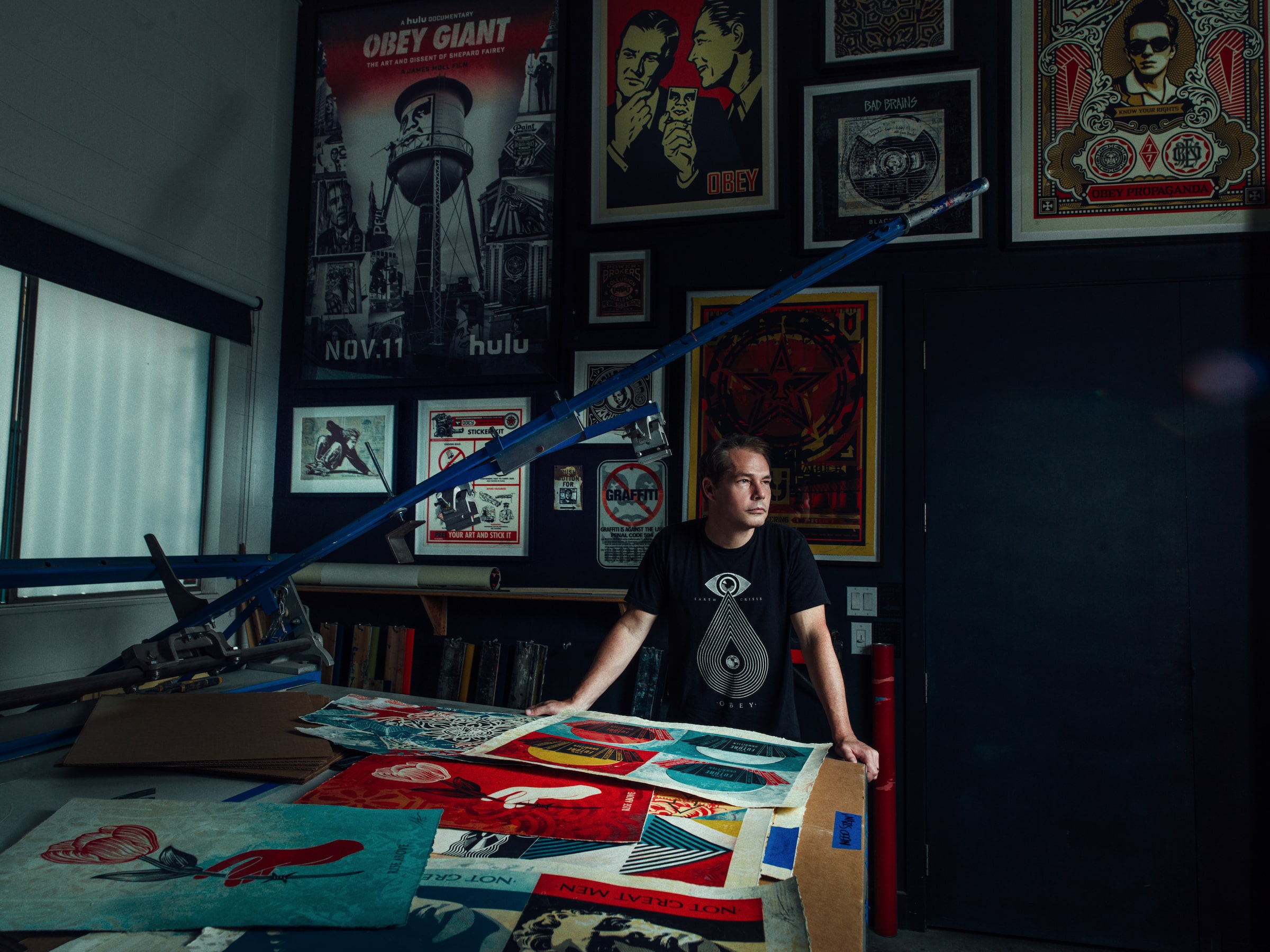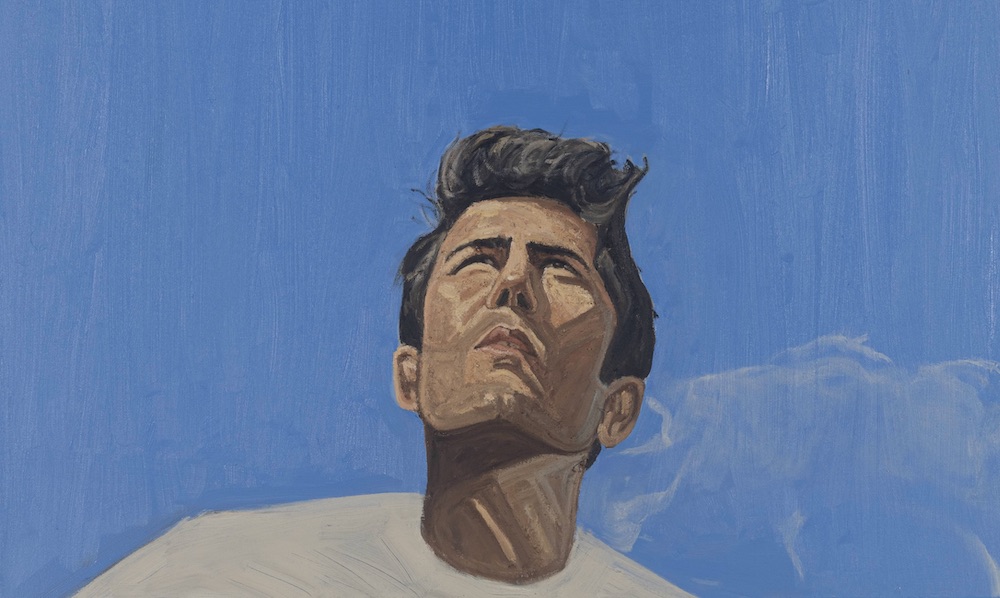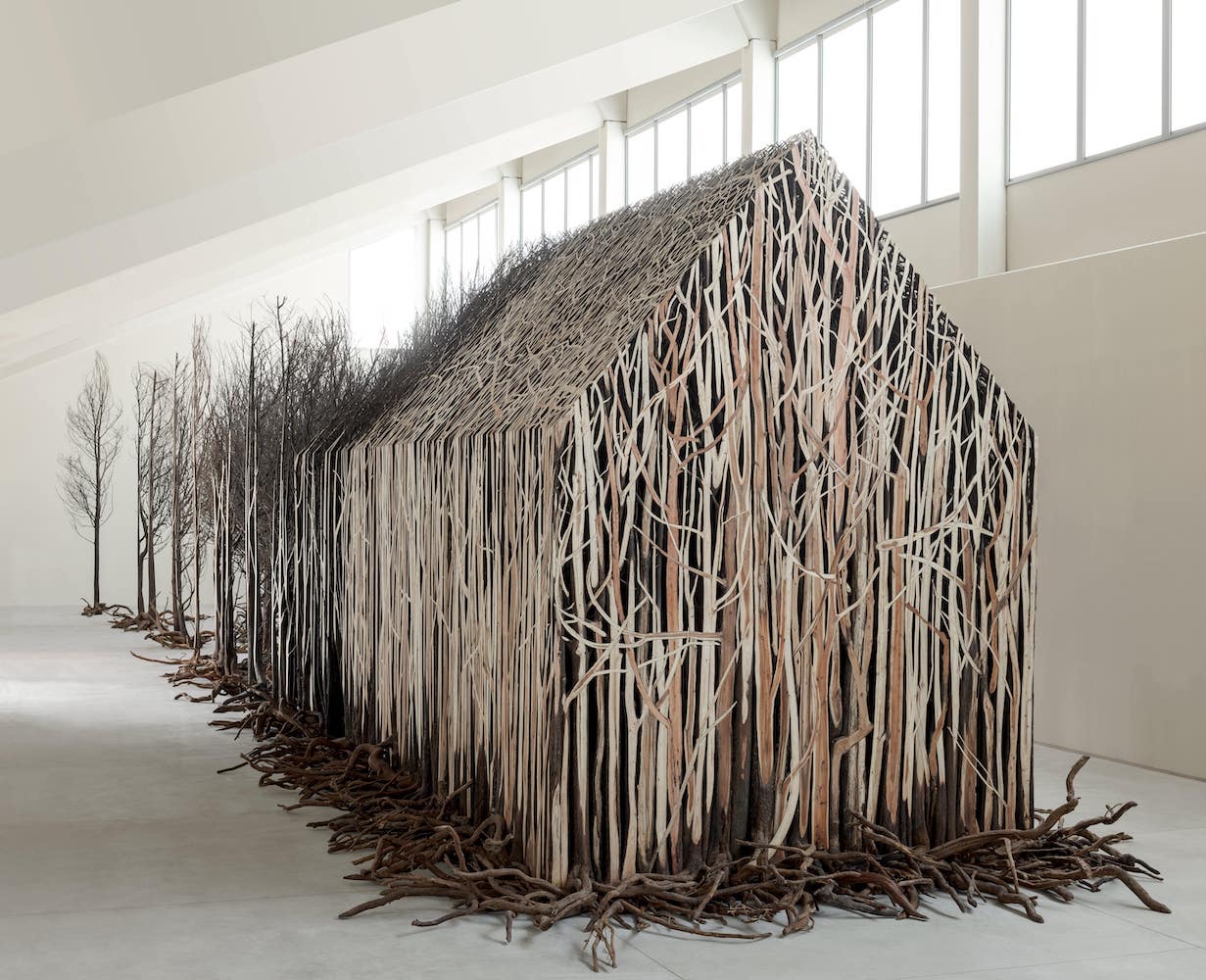Nina Katchadourian is an artist and professor who approaches everyday life with both a humorist’s sensibility and an academic’s solemnity. She has a knack for taking a closer look at the mundane, and the viewer, following her lead, looks closer, too—be it at a self-destructing popcorn machine, Flemish self-portraits in airplane lavatories, or a dance party set to a remix of on-hold music.
Over the course of her career, Katchadourian has worked on projects both playful and arresting: ”The Mended Spiderweb” series, in which she repaired spiderwebs with red thread; The Recarcassing Ceremony, in which she reenacted a reanimation game she played with her brother as a child; the Sorted Books project in which she stacked books so that their titles read like witty, self-assured poetry: “Primitive Art / Just Imagine / Picasso / Raised by Wolves.”

Artwork by Holly Rader.
Katchadourian, who is based in Brooklyn and Berlin, approaches the quotidian with a keen eye for humor, rearranging and reframing the stuff of life into art that is not only amusing but also penetrating. Drollery draws the viewer in; newfound insight into the commonplace surprises and delights. In fact, the humor in her work arises from her signature blend of playfulness and sincerity, as she looks earnestly at topics that tend to be trifling, such as boredom, waiting, and limitation.
Whitewall spoke with Katchadourian over Zoom about her previous, ongoing, and upcoming projects. At a time when much of the world remains under lockdown, her words of wisdom on the ennui of the everyday couldn’t be more welcome.

Holly Rader working in her studio.
WHITEWALL: You might be the perfect artist to talk to right now since your work frequently grapples with the experience of boredom and waiting. Now, when we’ve all been stuck at home for so long, your work seems particularly relevant. How did you come to deal with these subjects?
NINA KATCHADOURIAN: The subject of boredom is one that I come to via the bigger umbrella subject of the everyday. I ask myself: What can I do with what’s around me all of the time that doesn’t seem to be art-like? How can I think about it as worthy of a second look and deeper investigation?
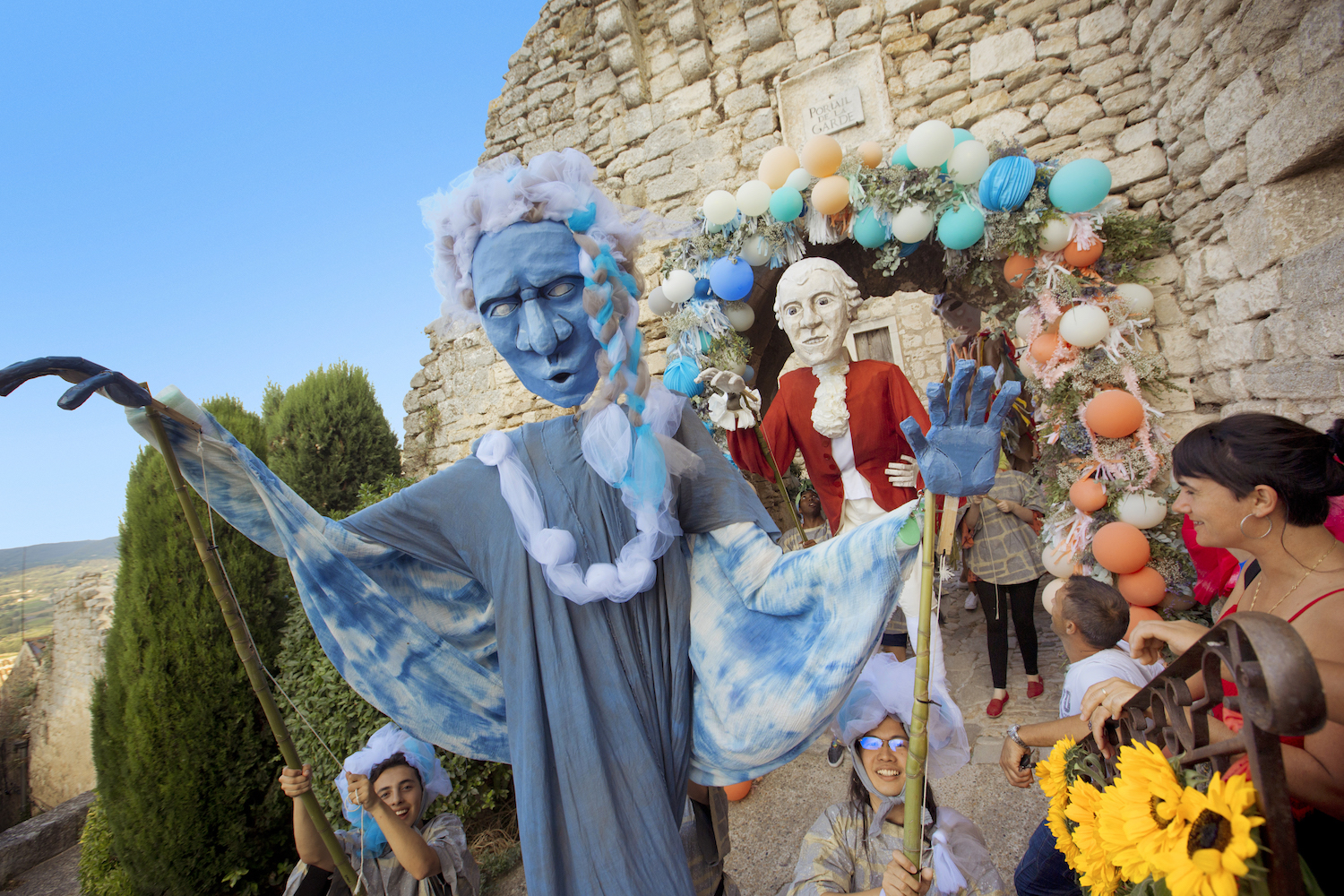
An image of summer celebration 2016 and the Grand Puppet Parade in Lacoste; puppets were created by SCAD alumni Sam Lasseter; courtesy of SCAD.
There’s a lot in our everyday that we are not seeing because we think it’s boring, and maybe that’s where boredom latches on to this bigger topic. I think when we are in situations where we feel bored, we’re both overstimulated and understimulated at the same time. I attended a psychology conference years ago where I learned the term “waiting time,” which is, for example, when you’re in a line, but you don’t know how long you’ll be in that line. It turns out there’s something extremely anxiety-provoking to the human mind about these situations of uncertainty.
Maybe that’s why right now is quite stressful: There’s so much going on, yet nothing is going on, and we don’t know how long this is all going to last.
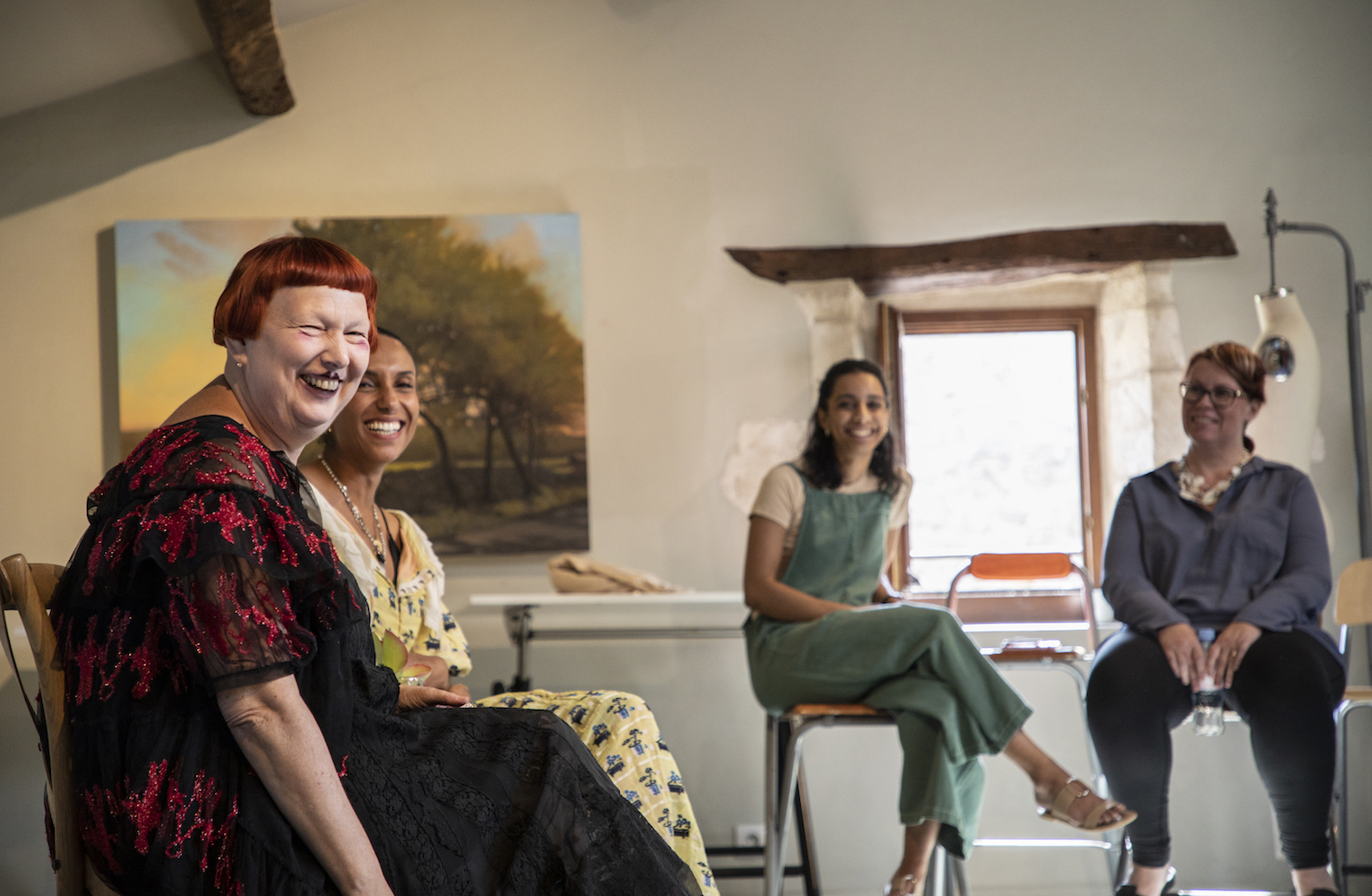
Lynn Yaeger and Chioma Nnadi speaking with SCAD students in Lacoste; courtesy of SCAD.
WW: How can your previous works dealing with boredom and waiting, like “Lavatory Self-Portraits in The Flemish Style” and ”The On-Hold Music Dance Party,” be reinterpreted in light of this pandemic?
NK: “Lavatory Self-Portraits in The Flemish Style” is part of a giant, sprawling project called “Seat Assignment” that I’ve been making for ten years now, every time I’m on a plane. The rules of engagement are that I can use only what I find, I can only use my phone to document it, and I have to improvise. I just have to see what’s there to work with and work with it. I’m constrained by time (sometimes there’s not enough and sometimes there’s way too much) and the social situation (the occasional awkwardness of what the person sitting next to me thinks I’m doing with the flight magazine and a packet of sugar). People often ask me about the person next to me and if I ever get questions. It’s sort of sad that I rarely do because I just look like a bored person playing with my phone, which is the very thing I’m trying not to be. I’m trying to be engaged in a way that leads me somewhere.
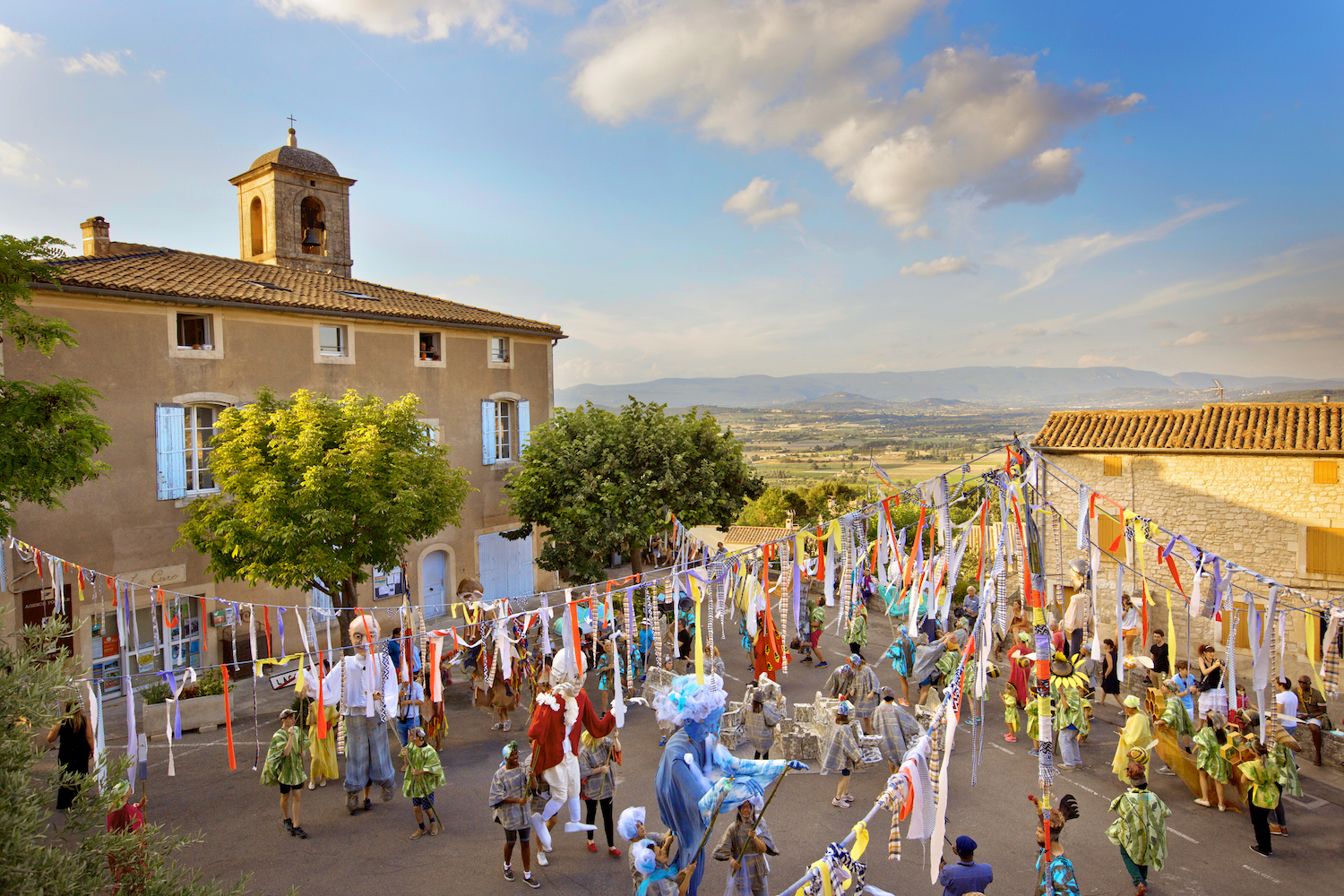
An image of summer celebration 2016 and the Grand Puppet Parade in Lacoste; puppets were created by SCAD alumni Sam Lasseter; courtesy of SCAD.
“Lavatory Self-Portraits in The Flemish Style” is a series of self-portraits that I’ve taken in the airplane bathroom. It’s part of my larger inquiry: What can I do with nothing when art doesn’t seem likely or possible? What else is there, right now around me, that I haven’t given a second look at?
WW: That brings up the question of productivity, which has been a hot topic during the quarantine. Some people are advocating for maximum productivity while others are rejecting that notion in favor of leisure. What is your goal with these works? Is it to transform or enjoy that boredom? Or to call attention to it?

Courtesy of Holly Rader.
NK: We’re not very good at “doing nothing,” in the best version of what I mean by that. There’s something really fantastic about just spacing out: not thinking about anything, in particular, letting your mind move and seeing where it goes, detaching from all of the thinking and the doing.
I know a lot is said about the cellphone. I’m kind of tired of the clichés about how we’re always staring at our phones. I know this; I do it, too. But at the same time, my phone is a tool that has become completely fundamental to ”Seat Assignment” and as an artist tool in general because I’m looking for opportunities to use it, and it’s helped me see more than I might’ve without it. That’s true for walking around in the world a lot of the time, too.

Artwork by Holly Rader.
I’ve always got this camera in my pocket, so I’m alert to things that are visually interesting to me. I often say that a tool is really only what you make of it. It’s not that the phone inherently turns us into passive zombies. It can be something that activates you to look more broadly, or more closely, or to just look around.
WW: That’s an especially useful observation now when artists might not have access to equipment anymore. They still have their phones, though.

Artwork by Holly Rader.
NK: Yeah, I think as we’ve seen, a lot of things are being made in people’s homes and on their phones. I’ve been asked a lot of times about the viral Getty Museum challenge, which is to make yourself look like a famous artwork. For what it’s worth, I don’t actually see much connection between that and “Lavatory Self-Portraits in The Flemish Style” because it’s completely crucial that my attempts to dress up in ways that make me look like a painting are done in an airplane bathroom. I never would’ve bothered doing it in my studio or at home, because the working circumstances around it are part of what I’m trying to challenge myself with. Although, I’ve been very charmed by everybody’s at-home art history recreations. I do think they’re really wonderful, and anything that keeps people happy right now is great. But I think the connections to my own project are actually very superficial.
Productivity is tough. On one hand, I want to push myself, and on the other hand, I want to let myself off the hook and try to create that space for myself where it’s okay that I’m not doing anything because sometimes that is also the space during which ideas arise.
WW: Have you been making art during the quarantine?
NK: I’ll say this: I’ve been working a lot and I’ve been making a lot, but I would not necessarily say that everything I’ve been making is art. I’ve decided that it’s really important for me right now to relax the parameters around both the art and the making. So the “art-making” is in some ways split into two words for me at the moment and I’m not trying to question the two categories too much. I’ve been making a lot of things that I just find intensely pleasurable to make: I’m making a giant cardboard cactus in one corner of my room. It’s four feet tall. I’m going to put a bunch of toothpicks up and down its entire length to make the spines.
WW: I bet your cat will love that.
NK: [Laughs] I’m hoping the toothpicks will discourage him from chomping on it! Anyway, I started making this last week simply because I had the desire to. It may lead somewhere, or it may not, and that’s fine.
WW: Speaking of your cat, Stickies, I saw that he started an online art school for children on Facebook.
NK: Yeah. It happened on Facebook spontaneously; it wasn’t like, “Now I’m going to do a project.” But then it became a thing.
WW: It looked like people responded to it really well. There were a lot of comments and response videos from the kids showing their art assignments.
NK: Yeah, there have been three assignments now, and each time dozens of kids have responded. I just posted the fourth assignment (well, Stickies did).
This is a good example of what we were discussing earlier. Is Stickies Art School an art project? I don’t actually believe that everything an artist makes is art. I think that’s bullshit; I’ve never believed it. I think some things are made for the joy of making them, some things are made with a desire to start a dialogue about something, and sometimes things cross categories. I had a curator write to me the other day and say, “Stickies Art School is an amazing project!” I didn’t really see it as an art project, but she was making the argument that it has become one as it goes on, and I’m starting to see her point. Maybe Stickies Art School is about art pedagogy or my own experiences teaching and doing critiques. Perhaps not coincidentally, I’m working on a book at the moment that has to do with the history of critique. So, maybe in some strange way Stickies Art School is this crit project erupting in a different direction. In the end, it’s all coming out of the same brain.
WW: I can’t wait to read the book! What is it called and when is it expected to be out?
NK: It’s still in the beginning stages so it’s a long time away. The book is called Tales from the Crit. In it, I interview artists about their experiences with critique — as teachers, students, or just as another artist in the room. So, it’s really trying to think about this thing that we do when we teach or learn art-making and the conventions around that. I have a lot of amazing anecdotes friends have told me over the years that I’m trying to collect.
WW: While we’re in the midst of this pandemic, where can we view your work online? Do you have any upcoming virtual exhibitions? I know The Recarcassing Ceremony was recently shown on Catharine Clark Gallery’s website.
NK: The Recarcassing Ceremony is currently part of another online show. I also released an album three months ago, the result of collaboration with someone I met on a residency in 2018. I have a website, and I have work on view on the Catharine Clark Gallery website and the Pace Gallery website. Coming up, I’m supposed to do projects with Pace in September and March, and a solo show in January with Catharine Clark. We’ll see what happens.





